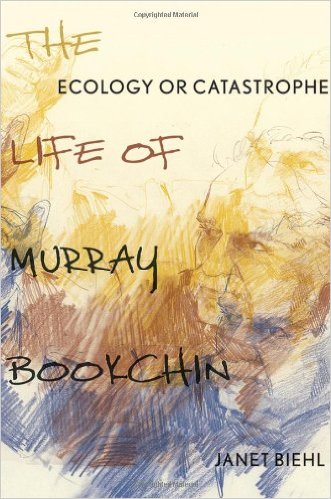This first appeared on the Project Oakland blog on April 25, 2014.
* * *
 Social discord tends to get people writing. Books and essays become especially vital tools when the world seems out of order and doesn’t work in the way that you think it should.
Social discord tends to get people writing. Books and essays become especially vital tools when the world seems out of order and doesn’t work in the way that you think it should.
Indeed, the housing crisis in the Bay Area has unleashed a torrent of writing on housing costs, displacement, and changes in local culture. It seems like new articles on these issues appear daily, if not more frequently. A lot of the work is forgettable, some of it is pretty great, and all of it enriches the massive discussion that we are having throughout the region about how our lives, homes, and the economy interact.
The recent publication of Development Without Displacement: Resisting Gentrification in the Bay Area is a landmark in the maturation of this dialogue. Produced by Causa Justa / Just Cause with help from the Alameda County Public Health Department, it sets a new standard for reflection on gentrification. Attractively packaged in a glossy, four-color binder, it is well-written, thoroughly documented, and full of instructive, compelling graphics. It sets out to explain what gentrification is, how it operates locally, and what can be done to stop it. It is the most comprehensive, insightful treatment of gentrification in the Bay Area to date and will likely serve as a key reference for people grappling with the issue in the years to come.
Like any text, it has strengths and weaknesses. In the interest of encouraging dialogue about it, I will note three of each below.
Three Strengths
- It portrays gentrification as a social process and, by doing so, breaks with the highly individualistic approach to the subject that is so common among Bay Area leftists. That is, a lot of the discourse about gentrification looks like this: first you identify the “gentrifiers,” then you counterpose them to the authentic “community,” and then you agonize over how these two groups relate to one another. Are the “gentrifiers” being arrogant or insensitive? Should the “community” actually welcome them? And how exactly do you distinguish a real “gentrifier” from a real “community” member anyway? Who gets to decide? Questions such as these drive much of the dialogue about the topic locally. Focused on existential matters of identity, they trigger lots of posturing and handwringing but have little relevance to housing justice. Fortunately, Development Without Displacement dispenses with this approach altogether by zeroing in on the economic forces and government policies that make gentrification possible.


 Oakland’s recent history is rich in contradictions. When voters elected Lionel Wilson—the city’s first Black and Democratic mayor—in 1977, they took a decisive step in the ouster of the white, Republican, pro-business regime that had run Oakland as an exemplar of American municipal apartheid for decades. Wilson’s ascendency was part of a vast transformation in the composition of local political elites, who now largely reflect the political and racial background of the population that they govern. Indeed, since then, most of Oakland’s mayors have been “minorities,” all have been Democrats, and several have had roots in social movements. Similar claims can be made about those who have occupied the posts of City Manager, Chief of Police, Economic Development Director, and Port Director, to cite only the most significant positions. In many respects, there was a revolution in city affairs, one that we can analogize, with some justice, to the 1994 defeat of apartheid in South Africa.
Oakland’s recent history is rich in contradictions. When voters elected Lionel Wilson—the city’s first Black and Democratic mayor—in 1977, they took a decisive step in the ouster of the white, Republican, pro-business regime that had run Oakland as an exemplar of American municipal apartheid for decades. Wilson’s ascendency was part of a vast transformation in the composition of local political elites, who now largely reflect the political and racial background of the population that they govern. Indeed, since then, most of Oakland’s mayors have been “minorities,” all have been Democrats, and several have had roots in social movements. Similar claims can be made about those who have occupied the posts of City Manager, Chief of Police, Economic Development Director, and Port Director, to cite only the most significant positions. In many respects, there was a revolution in city affairs, one that we can analogize, with some justice, to the 1994 defeat of apartheid in South Africa. Chuck Morse is an American anarchist, academic, translator, editor, and writer. He founded the Institute for Anarchist Studies and The New Formulation: An Anti-Authoritarian Review of Books. Morse was the editor of Perspectives on Anarchist Theory and taught at theInstitute for Social Ecology.
Chuck Morse is an American anarchist, academic, translator, editor, and writer. He founded the Institute for Anarchist Studies and The New Formulation: An Anti-Authoritarian Review of Books. Morse was the editor of Perspectives on Anarchist Theory and taught at theInstitute for Social Ecology.
 Murray Bookchin was a pivotal, polarizing figure in the post-WWII history of anarchism. He put ecology and democracy on the anarchist agenda in a way that was as novel as it is enduring. As a polemicist, he spent decades at the center of crucial debates about history, strategy, and foundational ideals. Even his critics must acknowledge that he made major contributions to the growth and clarification of the anarchist perspective.
Murray Bookchin was a pivotal, polarizing figure in the post-WWII history of anarchism. He put ecology and democracy on the anarchist agenda in a way that was as novel as it is enduring. As a polemicist, he spent decades at the center of crucial debates about history, strategy, and foundational ideals. Even his critics must acknowledge that he made major contributions to the growth and clarification of the anarchist perspective.